Click here for the index of the Nanasaba 1st Season Development Diary
Good evening! I’m sou7. Continuing from yesterday’s Day 10 of the Nanasaba 1st Season Development Diary, I’ll be introducing a new route today.
Current Nana-Iro Country
Today marks one week since the start of the main gameplay. Thanks to the cooperation of the participants, we’ve managed to build a remarkably extensive rail network.
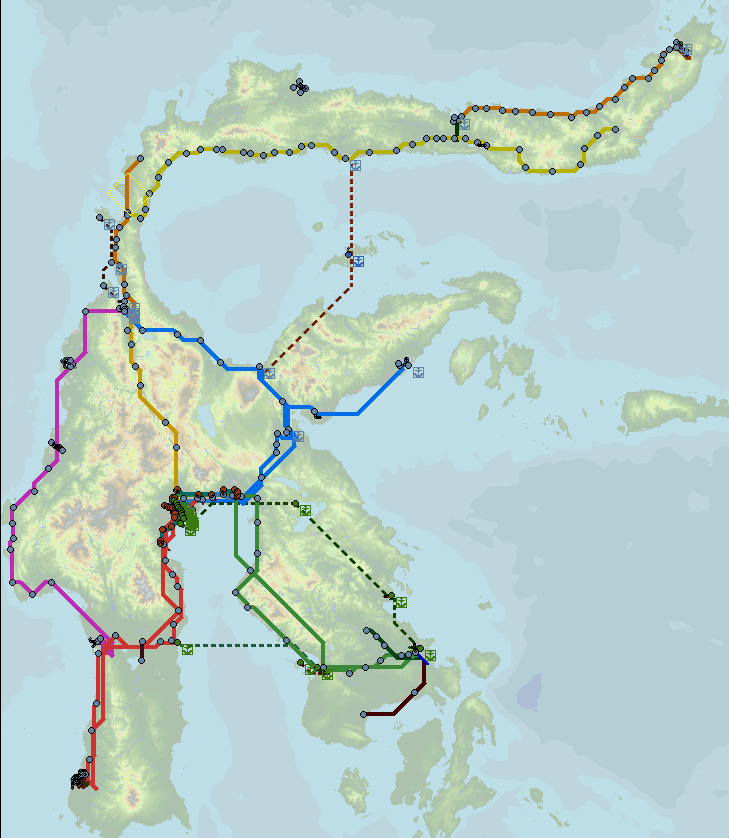
The crowded central area is Masaba City.
- The blue line extending to the northeast from Masaba is the Ryugu Main Line (introduced in 6th day) and its branch, the Hoso Line.
- The green line extending to the southeast from Masaba is the Kenen Main Line.
- The red line extending to the southwest from Masaba is the Makasa Main Line (introduced in 5th day).
- The yellow line extending to the north from Masaba is the Minahasa Main Line (introduced yesterday).
Also, the pink line running north–south along the western side is the Saikai Main Line.
And at the base of the Minahasa Peninsula, where the Hoso Line, the Minahasa Main Line, and the Saikai Main Line converge, lies Paru City. Over this weekend, construction on the line extending north from Paru has progressed, and today the tracks have finally been connected all the way to Manado City, at the very tip of the peninsula.
Railways of the Minahasa Peninsula
Here is a zoomed-in map of the Minahasa Peninsula. The Houyou Main Line, which runs along the southern side of the peninsula, and the Houin Main Line, which runs along the northern side, have been constructed. Neither line is fully open yet, so traveling between points requires transferring across several routes.
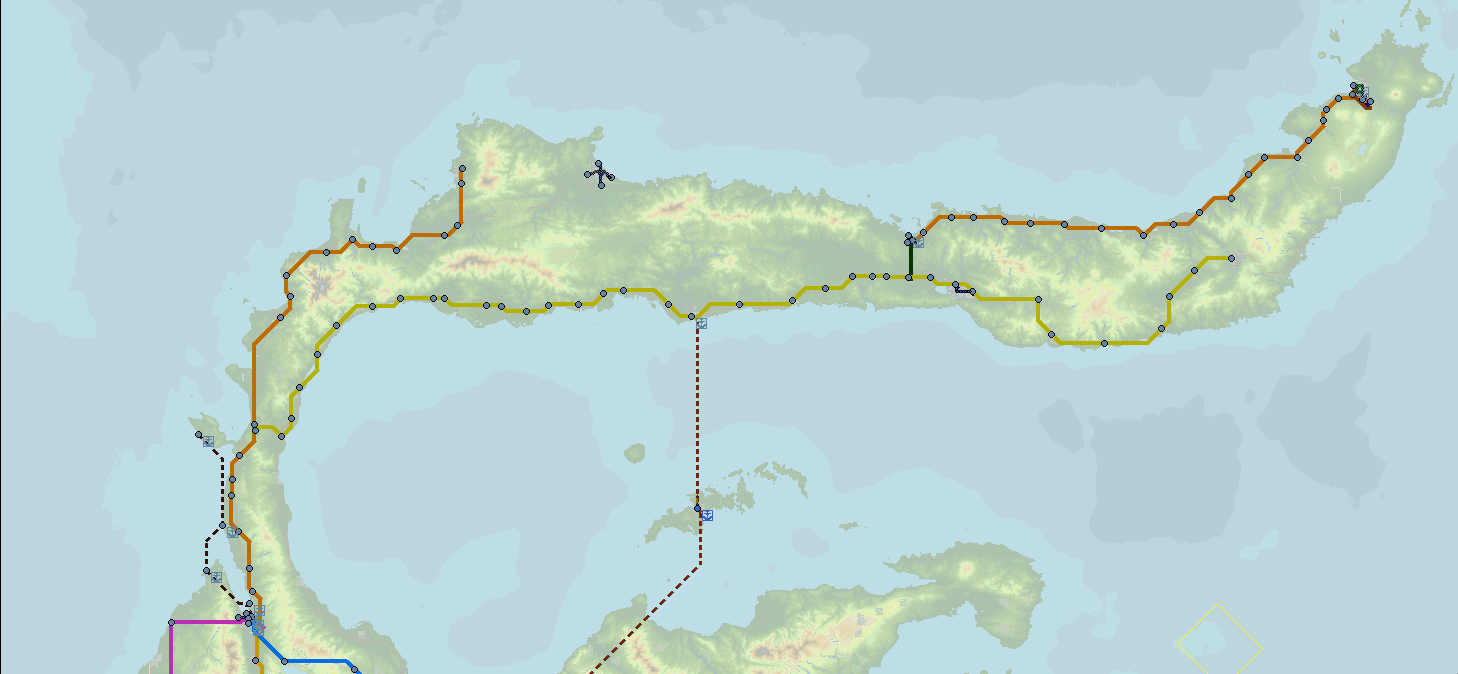
If you wish to travel from Paru (at the base of the peninsula) to Manado, you must:
- Take the Houin Main Line from Paru Station to Tanbe Station,
- Then transfer to the Houyou Main Line from Tanbe Station to Kohara Station (with a transfer at Marisa Port Station along the way),
- From Kohara Station, take the Kanda Branch Line to Kanda Station,
- And finally, take the Houin Main Line from Kanda Station to Manado Station.
In total, this requires transferring across three lines with four transfers. It is very inconvenient at present, but once the entire network is open, a direct express service will likely be introduced.
Nanairo National Railways – Houin Main Line (Paru Station – ToriTori Station)
Next, I will introduce the operational section from Paru to ToriTori.
In yesterday’s diary, I introduced the Minahasa Main Line connecting Masaba North Station to Paru Station. From there, you transfer to the Houin Main Line.
Paru Station
Upon leaving Paru Station, the line runs along the coast. Along the narrow strip of land between the tracks and the sea, small fishing villages appear one after another.
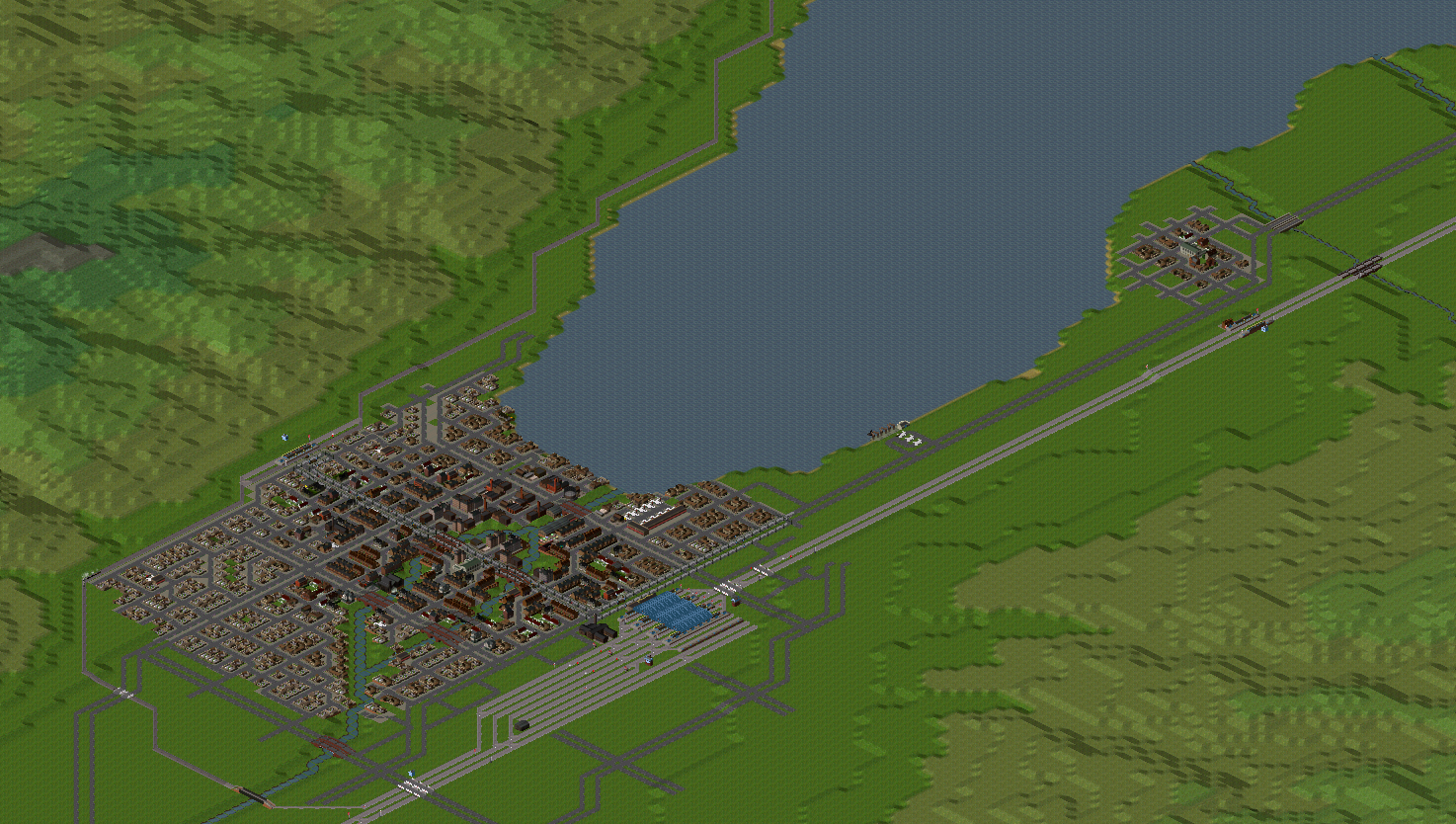
Tanbe Station
Near Tanbe Station, there is a branch line that connects the Houyou Main Line and the Houin Main Line. The route involves crossing mountains and features very sharp curves. The curves are so severe that plans for line improvement work are already underway.
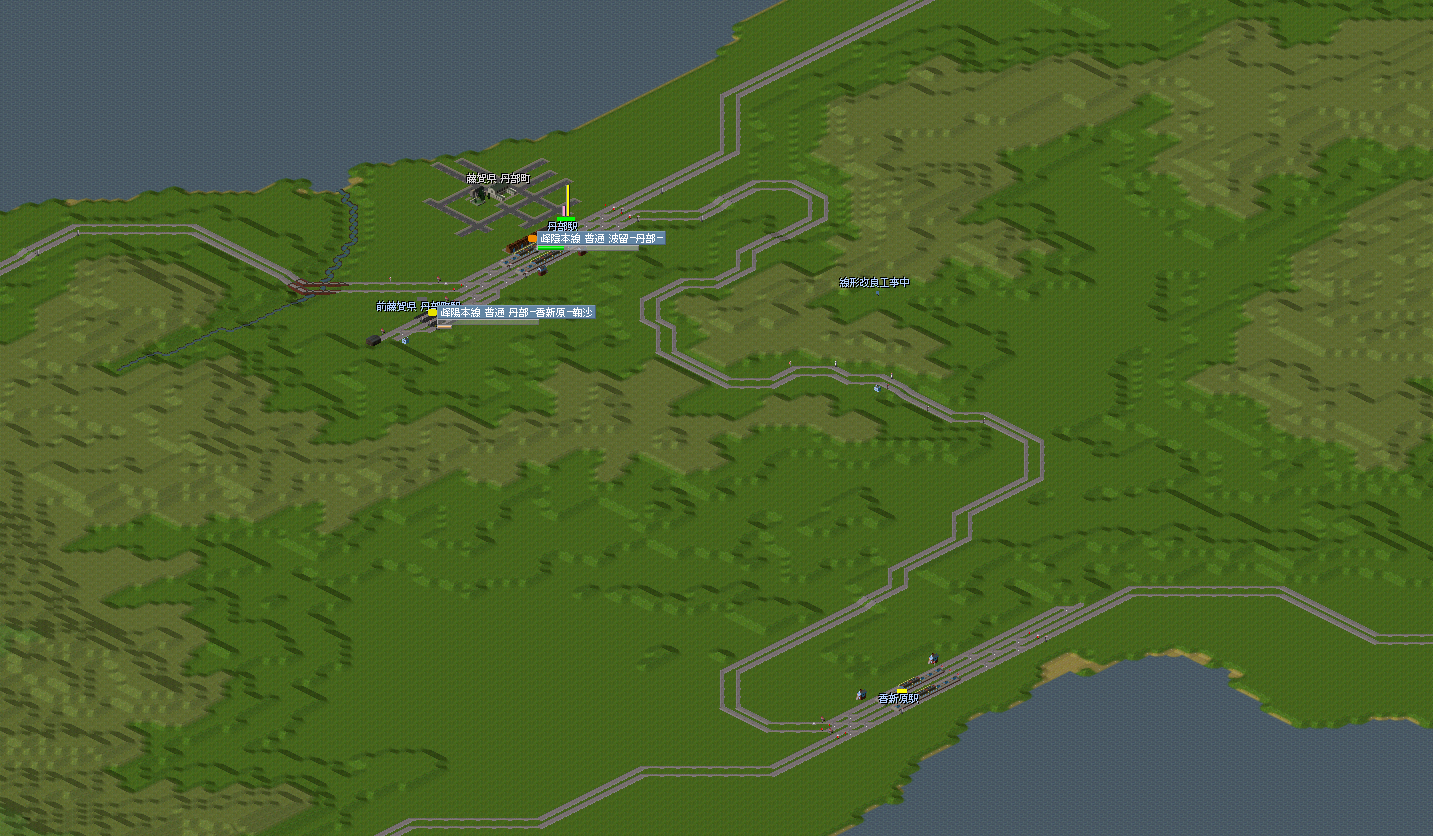
Fujiga Town
This is Fujiga Town, the capital of Fujiga Prefecture. Owing to its proximity to the sea, a freight line running to the port was constructed immediately after opening.
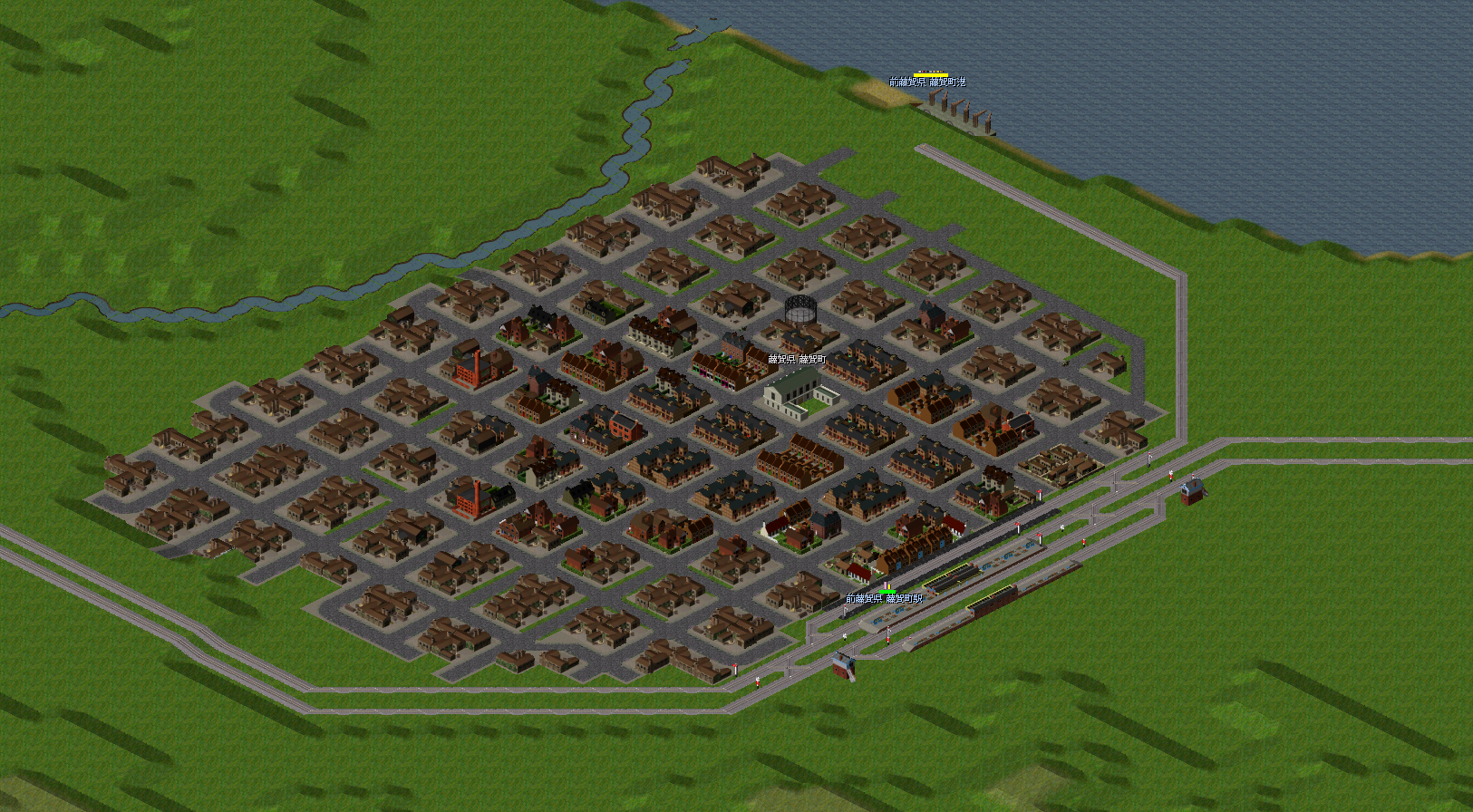
Ranpa Station
The capital of ToriTori Prefecture, ToriTori City, is located slightly to the north. Consequently, the Houin Main Line splits here into two: one branch (the main line) running east toward Manado, and another branch extending north toward ToriTori.
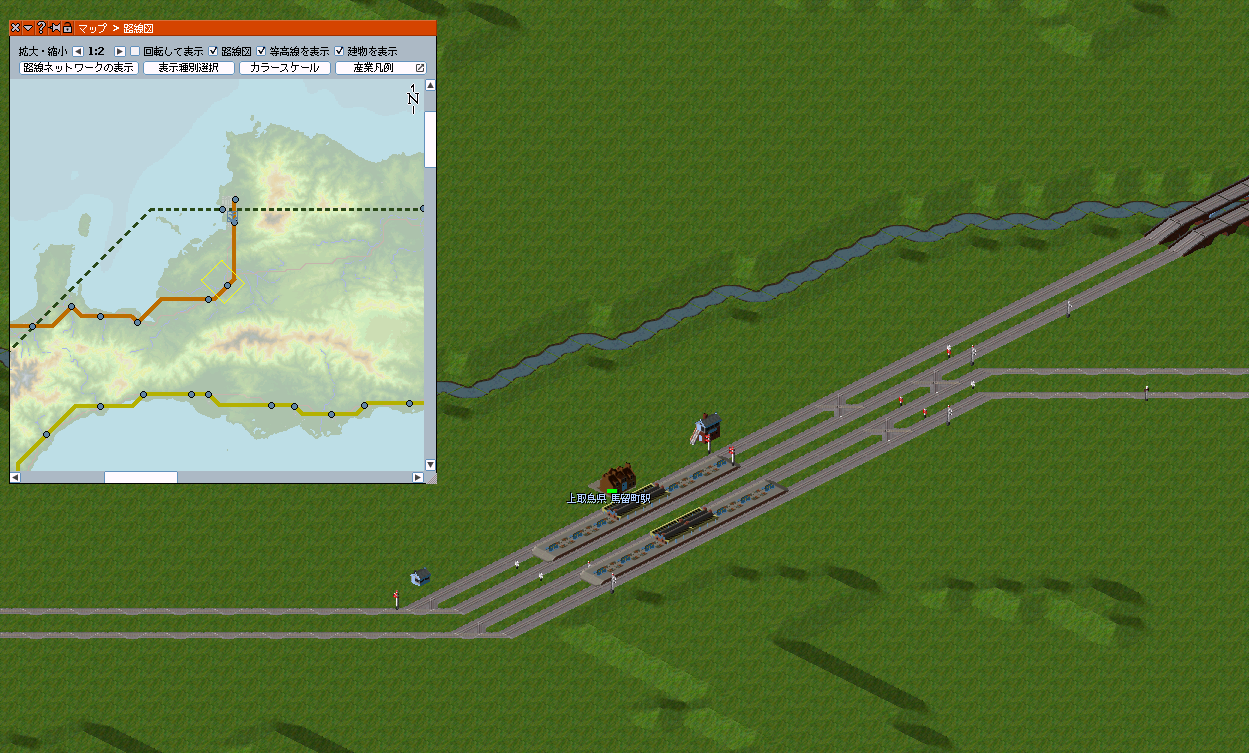
ToriTori Prefecture is famous for hunting. The name “Ranpa” (乱羽) literally means “disordered feathers.” According to legend, birds caught during hunts would suddenly thrash about uncontrollably near this area, as if their feathers had gone wild. This strange phenomenon happened so often that the place came to be called Ranpa.
ToriTori Station
This is ToriTori Station, the terminus of the branch line. Thank you for riding.
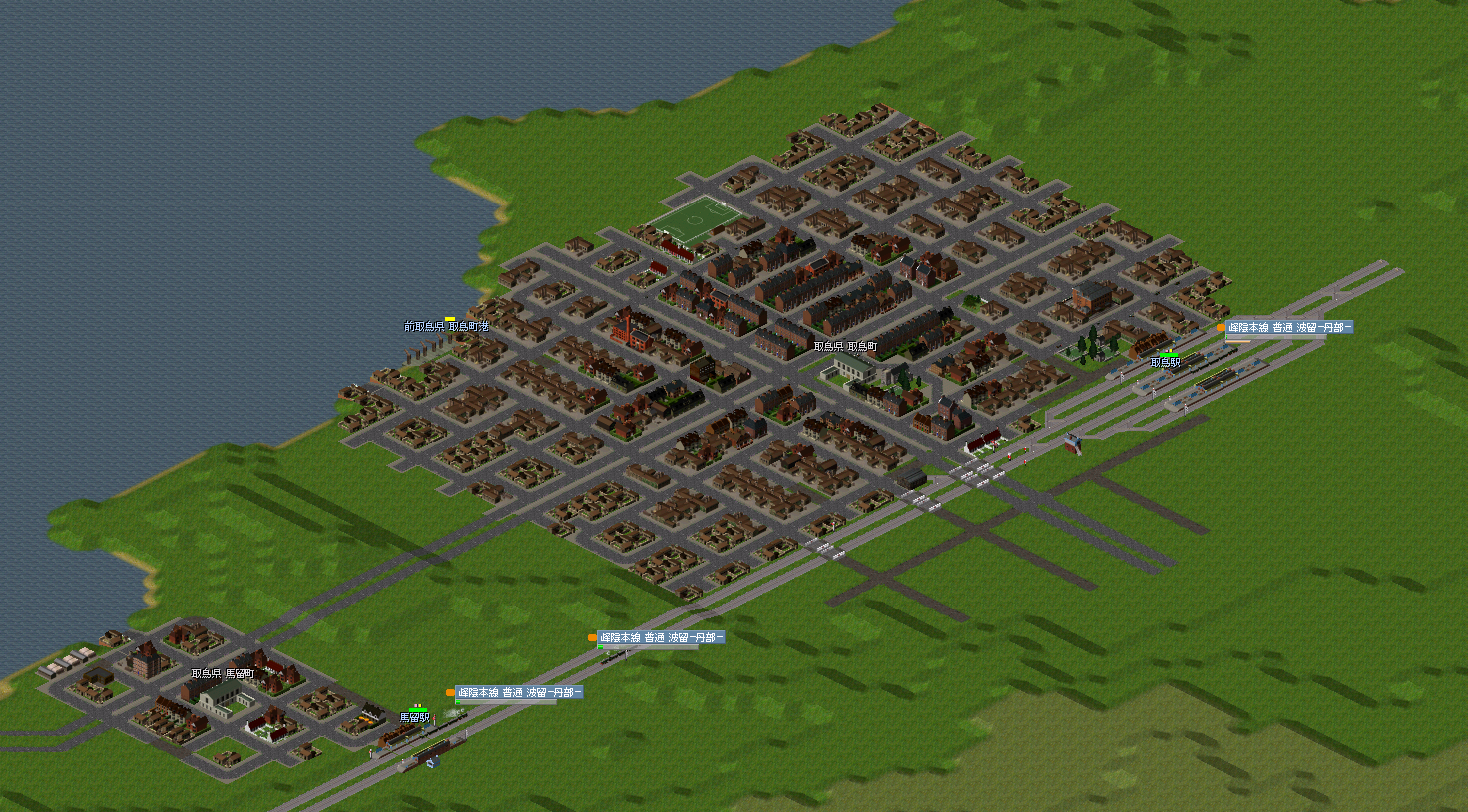
Tomorrow, I plan to introduce the section east of Ranpa Station. Please look forward to Day 12 of the Nanasaba 1st Season Development Diary!